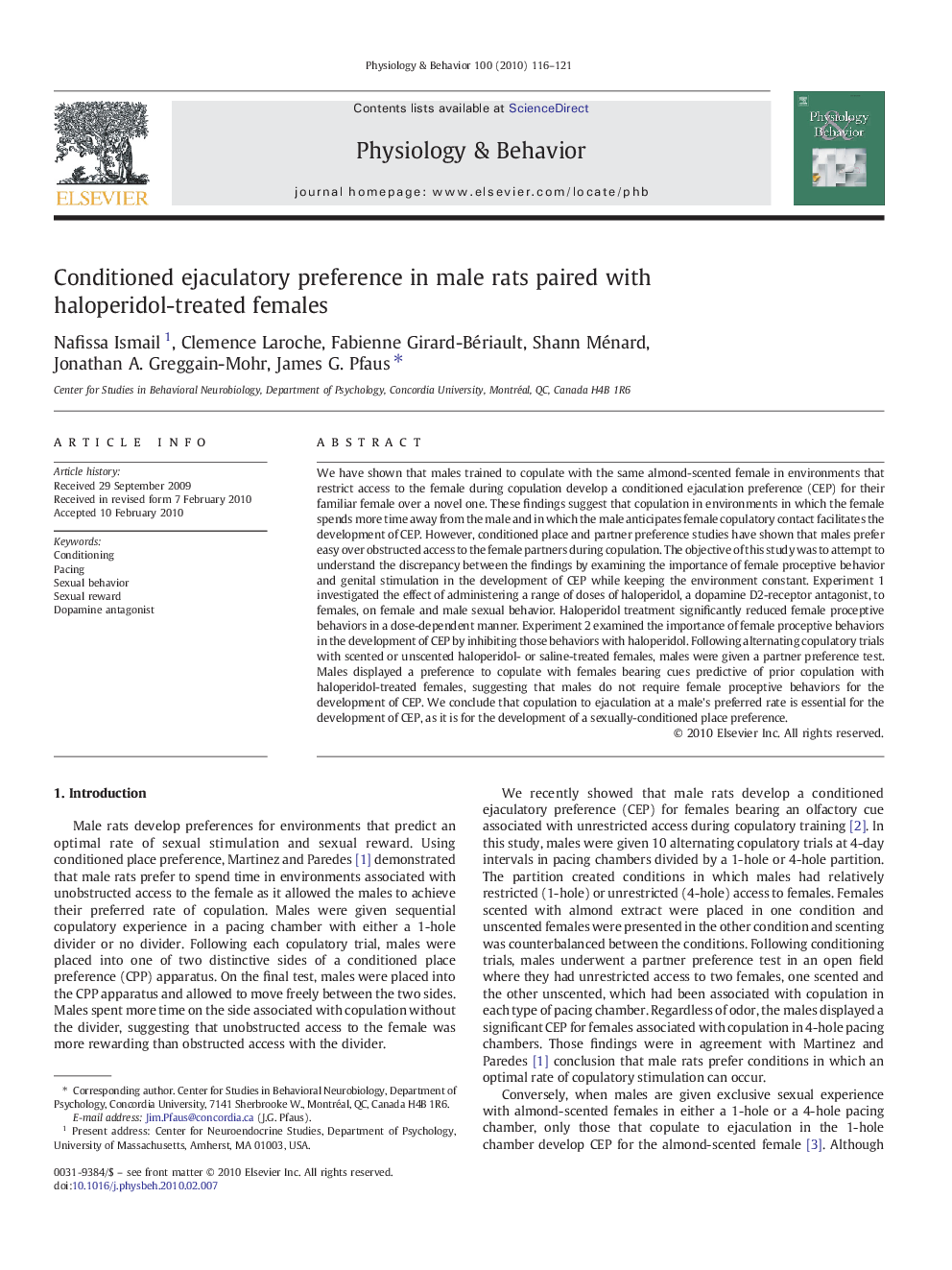| Article ID | Journal | Published Year | Pages | File Type |
|---|---|---|---|---|
| 2844889 | Physiology & Behavior | 2010 | 6 Pages |
We have shown that males trained to copulate with the same almond-scented female in environments that restrict access to the female during copulation develop a conditioned ejaculation preference (CEP) for their familiar female over a novel one. These findings suggest that copulation in environments in which the female spends more time away from the male and in which the male anticipates female copulatory contact facilitates the development of CEP. However, conditioned place and partner preference studies have shown that males prefer easy over obstructed access to the female partners during copulation. The objective of this study was to attempt to understand the discrepancy between the findings by examining the importance of female proceptive behavior and genital stimulation in the development of CEP while keeping the environment constant. Experiment 1 investigated the effect of administering a range of doses of haloperidol, a dopamine D2-receptor antagonist, to females, on female and male sexual behavior. Haloperidol treatment significantly reduced female proceptive behaviors in a dose-dependent manner. Experiment 2 examined the importance of female proceptive behaviors in the development of CEP by inhibiting those behaviors with haloperidol. Following alternating copulatory trials with scented or unscented haloperidol- or saline-treated females, males were given a partner preference test. Males displayed a preference to copulate with females bearing cues predictive of prior copulation with haloperidol-treated females, suggesting that males do not require female proceptive behaviors for the development of CEP. We conclude that copulation to ejaculation at a male's preferred rate is essential for the development of CEP, as it is for the development of a sexually-conditioned place preference.
